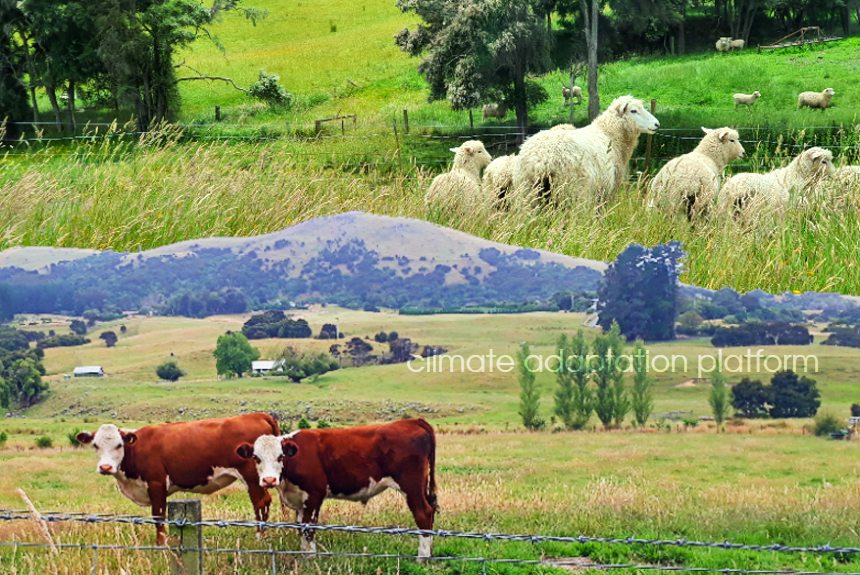Agriculture is a significant industry in New Zealand, contributing to 5% of its GDP and is one of the country’s biggest employers. However, the sector is also the country’s dominant contributor to climate change, accounting for half of its total carbon emissions.
Data from New Zealand’s Ministry of the Environment shows that almost half of New Zealand’s emissions come from the agricultural sector, where three-quarters of methane is emitted from livestock digestive systems, nitrous oxide from fertilizer application, and manure treatment, storage, and spread on pasture (Agricultural emissions, 2023).
Previous attempts by the governments to introduce emissions reduction targets or emission pricing were faced with strong pushback from most New Zealand farmers (Crown vs. Cow, 2023).
Under the NZ Zero Carbon Act, the country needs to slash biogenic methane at 10% by 2023 and 24 to 27% by 2050.
According to RNZ’s article, “Crown vs Cow part three: Why farming reneged on its deal to cut emissions,” these pushbacks are signs of climate denialism still firmly rooted in sector parts.
Crown vs. Cow (2023) says:
“However, for progressive farmers who see the benefits of addressing climate change, further delay in climate action has been highly frustrating. A cost-benefit analysis shows that if farmers agreed to an emissions tax put forward by the industry leaders, it could bring many economic benefits, including better water quality, enriched biodiversity, improved animal health, and better profits. But failing to address climate change will cost farmers losses from the intensifying and frequent extreme events and international market sale losses with some large companies like Nestle, Mars, Danone, and Tesco, which buy significant quantities of New Zealand dairy and meat products, announcing that they will prefer suppliers that have achieved significant emissions cuts because they also have emission targets to fulfil.”
On 9 November 2023, Fonterra, a dairy cooperative owned by New Zealand farmers and the country’s largest company with revenue exceeding NZ $22 billion, announced its climate plan.
Fonterra plans to slash on-farm emissions by 30% in seven years or by 2030 by encouraging farmers to plant trees, treat cow pats, and introduce methane-cutting tools. Around 86% of Fonterra’s emissions come from on-farm, and the new target seeks to reduce emissions intensity per tonne of FPCM (fat and protein corrected milk) collected by Fonterra.
Fonterra farms produce more than a third of the country’s agriculture emissions, with other sectors also contributing, like sheep (23.8%), Beef cattle (18.7%), and other processor’s dairy farms (8.8%).
In its Climate Roadmap launched, Fonterra outlines the actions the Co-op will take towards its 2030 targets and ambition to be net zero by 2050.
According to Fonterra’s announcement, New Zealand is the first country to pass a law introducing mandatory climate-related risk reporting, which will become mandatory next year for around 200 New Zealand companies, including the co-op.
Fonterra CEO Miles Hurrell says their targets will also help the country achieve its 2030 targets under the Zero Carbon Act. Adding that, a full suite of targets and a plan to achieve them will provide high-value customers with the confidence to continue buying dairy from Fonterra and protect its reputation as one of the most emissions-efficient dairy suppliers at scale.
In May 2023, the dairy cooperative also published an online on-farm emissions booklet and a second edition in November 2023 for both online and printed versions. The first half of the booklet covers insights around on-farm emissions, why it is so important to reduce them, the approach Fonterra is taking, and the work necessary to achieve them. The second half details actions farmers can take to improve efficiencies to reduce farm emissions.
Learn more about Fonterra’s Climate Roadmap by visiting the link at the bottom of this post.
Sources:
Agriculture emissions and climate change. (2023 April 11). Ministry for the Environment. Retrieved from https://environment.govt.nz/facts-and-science/climate-change/agriculture-emissions-climate-change/
Johnston, K. (2023 August 19). Crown vs Cow part three: Why farming reneged on its deal to cut emissions. RNZ. Retrieved from https://www.rnz.co.nz/programmes/in-depth-special-projects/story/2018903090/crown-vs-cow-part-three-why-farming-reneged-on-its-deal-to-cut-emissions
Climate Change Response (Zero Carbon) Amendment Act 2019. (2021, April 5). Ministry for the Environment. Retrieved from https://environment.govt.nz/acts-and-regulations/acts/climate-change-response-amendment-act-2019/
Fonterra announces climate plans for the future. (2023, November 9). Fonterra. Retrieved from https://www.fonterra.com/nz/en/our-stories/media/fonterra-announces-climate-plans-for-the-future.html
Wannan, O. (2023, November 27). How Fonterra’s new climate plan could have got farmers to their first green goal. Stuff. Retrieved from https://www.stuff.co.nz/environment/climate-news/133302376/how-fonterras-new-climate-plan-could-have-got-farmers-to-their-first-green-goal



Leave a Reply